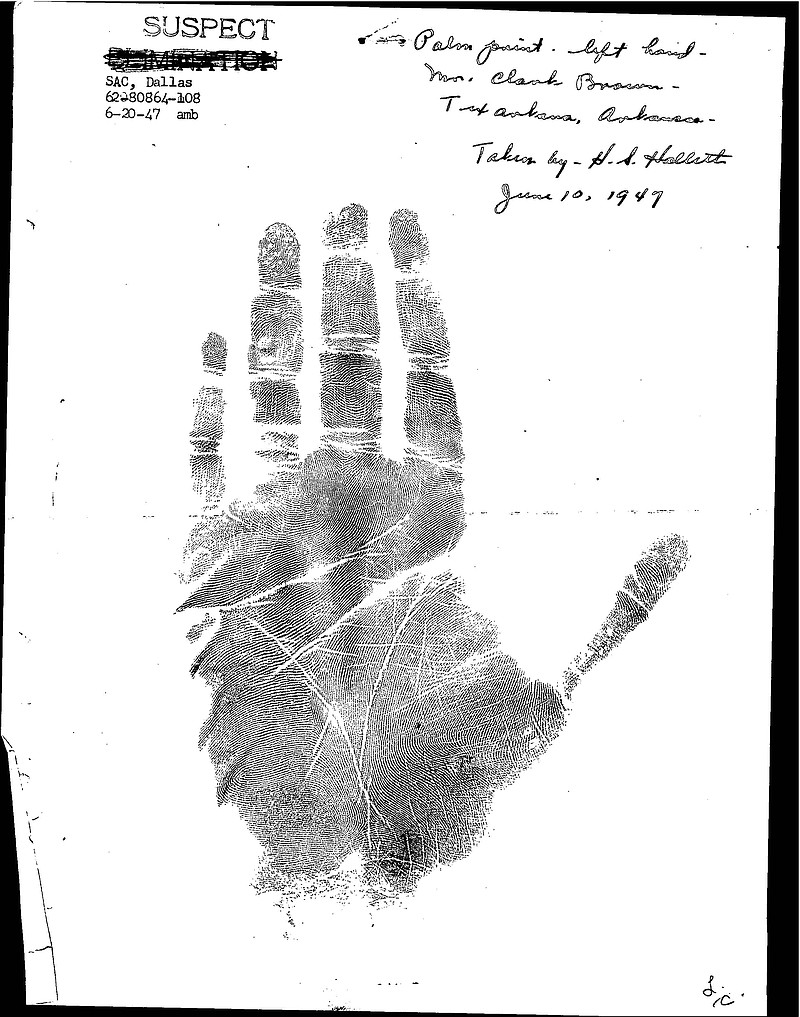WASHINGTON, D.C. - The FBI on Thursday published an extensive archive of documents - some perhaps never before available - from the investigation of Texarkana's infamous Phantom Killer murders of 1946.
An initial glance through the archive's more than 1,100 pages reveals memoranda and reports; news clippings, including from the Gazette; correspondence among, to and from law enforcement, including FBI Director J. Edgar Hoover; photographs of evidence; fingerprints and handprints; maps and diagrams; compilations of leads; and lists of suspects dating from 1946 to 1949.
Photo Gallery
City Year's Red Jacket Ball
City Year Little Rock/North Little Rock honored Judy Tenenbaum with a Lifetime of Service Award at their annual Red Jacket Ball. The corps members greeting guests with lively cheers as each person entered the ballroom. Before dinner, guests enjoyed a silent auction and entertainment by an African drumming group.
Collected as two large electronic files, the archive appears to comprise digitally scanned photocopies or microfilm, some of which are illegible or, in the case of images, poorly reproduced. No index or other explanatory material is included.
It is unclear how many of the documents have been available to the public before now. They were published on the FBI's Freedom of Information Act website, vault.fbi.gov. In response to inquiries, the FBI said only that "material requested three or more times is electronically made available to the public by timely posting to the FBI's Vault. We do not comment further on FOIA requests."
The website states that any documents published there may or may not be available for the first time: "Included here are many new FBI files that have been released to the public but never added to this website; dozens of records previously posted on our site but removed as requests diminished; files from our previous FOIA Library, and new, previously unreleased files."
Texarkanian James Presley, who authored a 2014 book on the case, said he could not be certain without examining the documents but he doubts any were never available before now.
"As far as I know, there wouldn't be anything new," said Presley, whose uncle W.H. "Bill" Presley investigated the case as Bowie County, Texas, sheriff.
Still, he commended the FBI for making the archive easily available to the public without them having to go through the often time-consuming and expensive process of making FOIA requests. One of his goals in researching and writing "The Phantom Killer: Unlocking the Mystery of the Texarkana Serial Murders" was to collect information on the case before documents disappeared, memories faded and those involved died, he said.
Also known as the Texarkana Moonlight Murders, the killings panicked the sister cities of Texarkana, Arkansas, and Texarkana, Texas, in the spring and summer of 1946. In five attacks over 10 weeks, the serial murderer known as the Phantom Killer assaulted eight people, shooting five to death.
Never officially solved, the case has joined the ranks of legendary murder mysteries. "The Town That Dreaded Sundown," a 1976 movie directed by Texarkana independent filmmaker Charles B. Pierce, was loosely based on the case and became a cult hit.
Presley and others argue that chief suspect Youell Swinney committed the murders, but other students of the case offer competing theories.
ONLINE
FBI Texarkana Phantom Moonlight Murders archive


